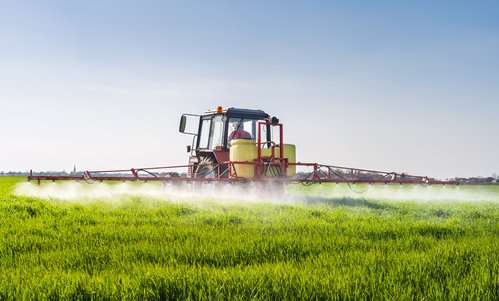Temperature and rainfall has allowed some weeds to flourish earlier than usual
By Jennifer Jackson
Although it is still early in the season, these weed pressures are something producers should pay close attention to, says Dave Curry, Certified Crop Advisor and field marketer for HDC, covering Lambton and Middlesex Counties.
“In general we are (seeing) a bit higher than usual weed pressure (in fields),” he says. “The weeds seem to be a bit more advanced than what farmers (may have been) expecting.”
This pressure is likely a result of weather patterns including a warmer than usual winter and a mild, wet spring.
“We didn’t have much of a winter and we have been getting a fair amount of rain. Many days (lately) have been in the mid-20 C range, helping to germinate weeds that may not normally germinate until May and June.
“Even though the calendar says its April, (some of the larger weeds make) it look more like the middle of May.”
Although winter annuals and perennials are thriving, there has not been much heavy pressure from spring annuals yet, says Curry. To address these winter annuals and perennials in winter wheat, for example, the optimal spraying window is fast approaching for many producers – if not here already.

fotokostic/iStock/GettyImagesPlus
In winter wheat, many winter annual and perennial weeds are quite large. In wheat and corn fields, Curry has found larger than usual populations of chickweed, dandelions, fleabane and purple deadnettle – specifically in Lambton and Middlesex counties.
“On some of the no-till acres, there’s quite a bit of fleabane that is larger than I would like to see,” he says. “It’s important farmers get in there early – once fleabane gets above 10 centimetres in height, (these weeds) are tougher to take down.”
Curry reminds producers to be especially mindful of Canada fleabane.
“Just because you didn’t have it in your field last year, doesn’t mean it wont be there this year,” he says. “(Fleabane) is very aggressive in terms of seed dispersal – it’s important to get out into the field and scout.”
Dandelions are also very large already – Curry has found some approximately 20 centimetres wide. Therefore, it will be critical for producers to spray high rates of herbicide if needed.
“This spring, especially in burndowns before soybeans on no-till (ground), we are recommending glyphosate at the high 2X rate,” he says. “Skipping out on (the high rates) of glyphosate may not work this year. (Farmers should) also mix in more than one mode of action (with the glyphosate).”
While the wet weather may concern farmers wanting to get in the field right away, Curry reminds producers there is still time to manage weeds. All it may take is switching your method of action in your mix.